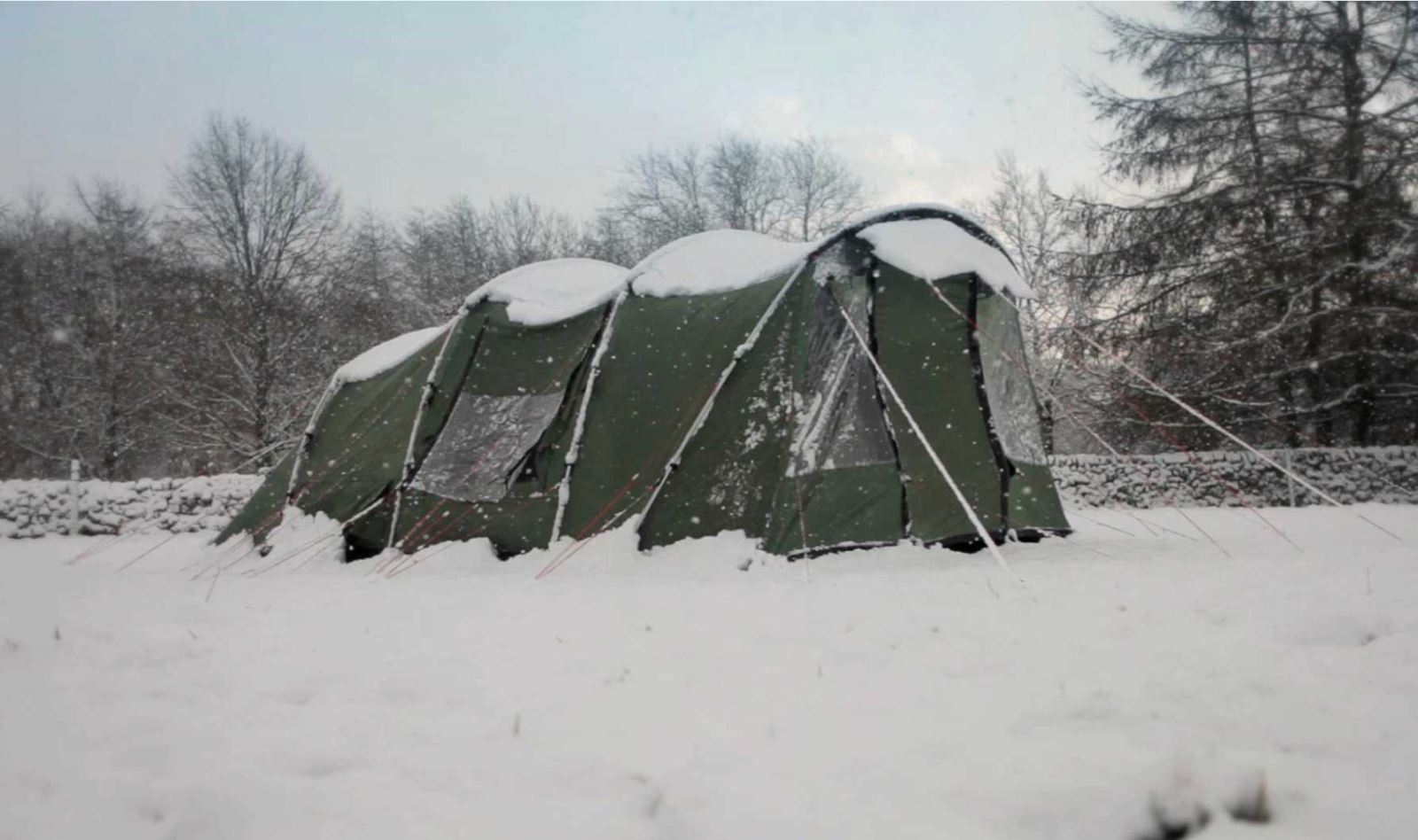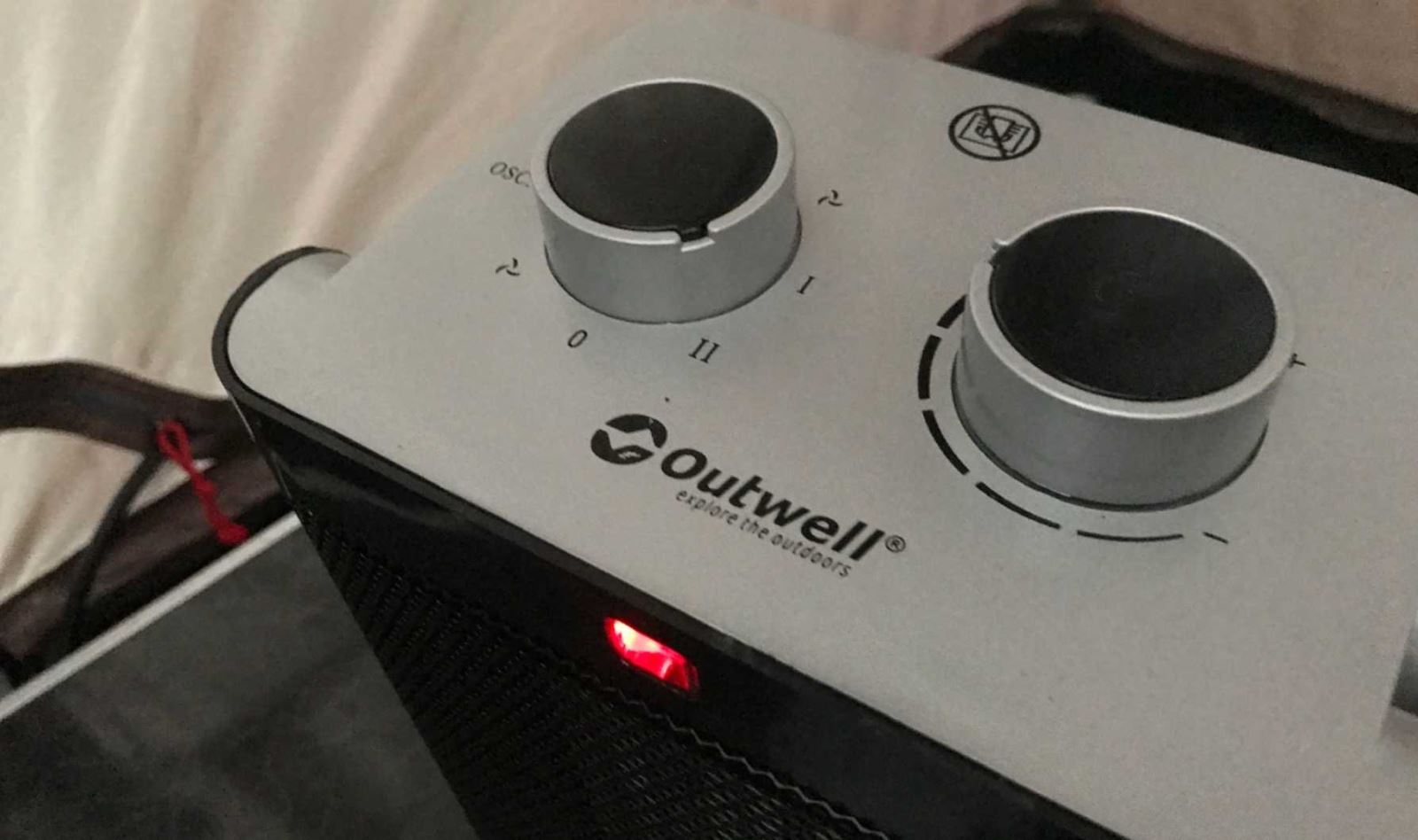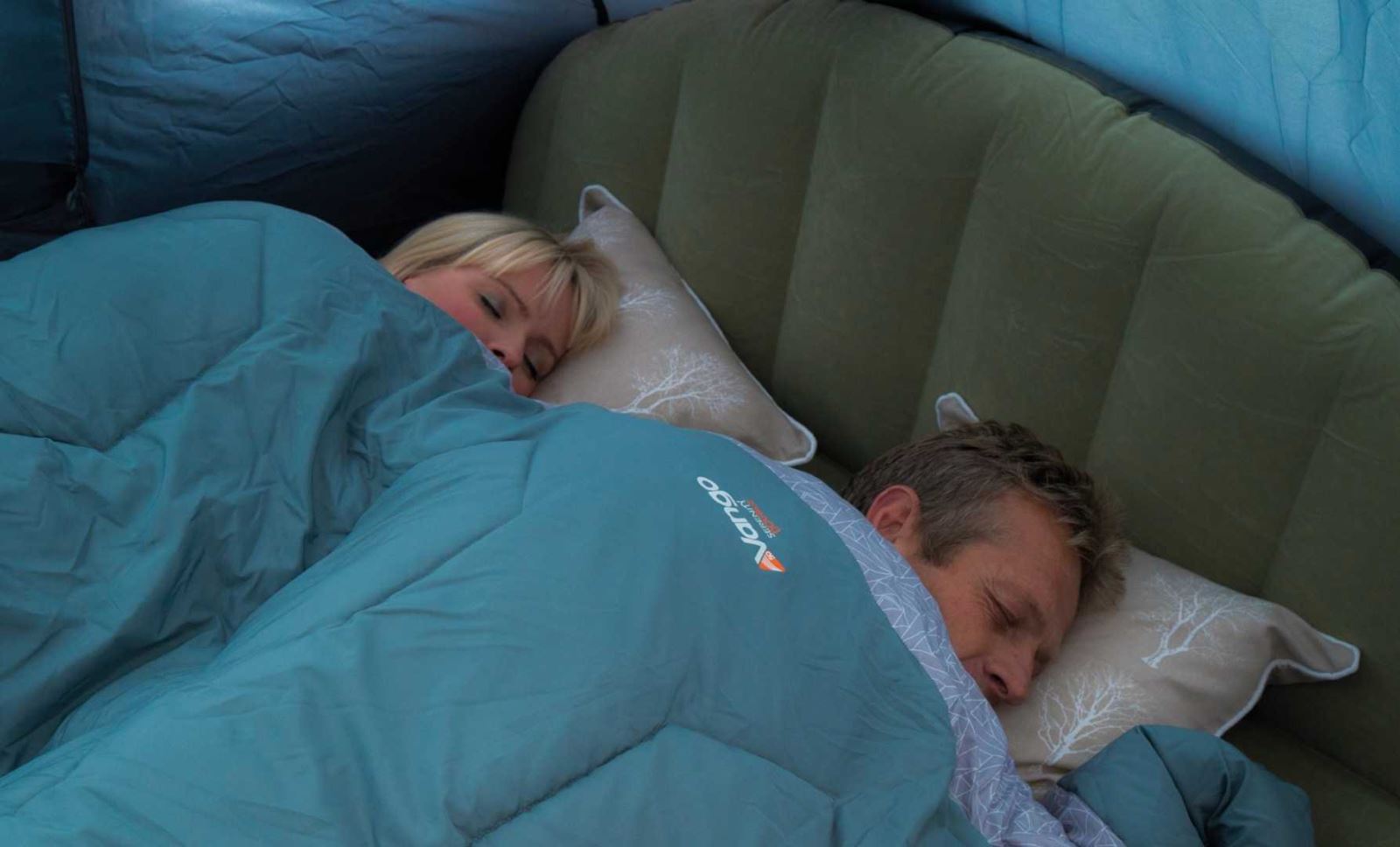Winter camping: all you need to know to keep warm
Winter doesn’t have to mean the end of the camping season. With good preparation and the right gear, there’s no reason why you can’t camp all year round with your family
Camping in the winter and camping in autumn can provide some wonderful memories. Many family-friendly campsites stay open all year round, even if some of their facilities might be limited off-season. But the whole experience could be ruined if you don’t prepare properly for the cold temperatures and bad weather.
Preparation is the key to camping in the cold. If your tent is up to the job and is pitched properly, it should be able to stand up to most weather conditions. And if you take the right gear, you’ll be warm and cosy no matter how low the temperature drops.
Page contents
- What to pack for winter camping
- Where can you camp all year round?
- Camping in the cold and keeping warm
- How to dress for winter camping
- About our magazines
Words by Iain Duff
What to pack for winter camping

(Photo by Warners Group Publications)
Pack three or four-season sleeping bags as well as duvets and fleece blankets from home. Take more than you think you’ll need and you’ll be fine. Hot water bottles, bed socks and woolly hats will all help keep you and your family cosy at night.
A tent carpet can offer real protection from the cold ground out of season. For many family tents you can get carpets that are designed to fit their dimensions, or you could simply lay a large blanket or fleece out on the floor.
Bring a folding plastic box in which you can leave your wet and muddy footwear next to the door – it will stop mud getting into the tent.
Make sure you’ve got a good lantern and spare batteries – the nights can be long in winter and you’ll need to keep the lights burning for longer than usual. If you have mains hook-up you will have access to unlimited electric heating and light.
Pack some rock pegs and a robust mallet in case of frozen ground, some spare guy lines, and take some absorbent cloths to deal with condensation. A decent-sized windbreak will block chill winds from blowing through the tent.
Where can you camp all year round?
Choosing the right campsite for autumn and winter camping is important. You probably won’t have to book a pitch in autumn or winter, but check the campsite you want to stay at is open when you want to go! Some are open all year round but many will be closed between November and Easter or will only offer hardstanding pitches, which aren’t always suitable for tents.
In autumn, forests are at their most spectacular so pick a woodland campsite. If you’re camping with the family pooch in tow, you can head for your favourite beach site without having to worry about seasonal dog bans. If you fancy a bit of glamping in fully equipped tipis, yurts, safari tents or pods, but been put off by the cost, this might be the time to try it, with prices falling from high season – and no struggling to dismantle a wet tent when you leave.
Camping at Christmas can be good fun – some sites will have special events planned over the festive season, as well as at Halloween and Bonfire Night.
Check out what indoor activities are on hand on the site for the kids before you head off. A games room or an indoor pool will keep them occupied no matter the weather. And a nearby family-friendly pub, preferably with open fires, is a definite asset come the evening. Try to get a campsite with electric hook-ups so you can enjoy electric heating and lighting.
Remember that it gets dark early, so don’t leave it too late to set off from home or you’ll be putting your tent up by torchlight. Pitch in the shelter of a wall or building if there is one. Definitely try to avoid pitching at the bottom of a slope and avoid other areas that look as though they might get waterlogged when it rains.
Finally, go local. If it turns too cold and wet, you can always go home…
Find out where you can camp with our pick of the best open all year campsites article.
Camping in the cold and keeping warm
Using a heater

(Photo by Warners Group Publications)
A heater is the best way to keep your tent warm when camping in the cold, but what is the best type and how do you use them? First of all, rule out anything with a naked flame for heating, with the double threat of carbon monoxide poisoning and fire. NEVER be tempted bring a smouldering barbecue into your tent for warmth. The fumes can kill.
The safest option is sticking to electric – a hook-up will allow you a whole world of heating choices, including fan, oil-filled, halogen and radiant options. A small oscillating fan heater, like the Katla by Outwell, is perfect for heating a tent living area.
Don't wait until the temperature is unbearably cold before putting your heater on. Once your body is cold it can be difficult to heat up again so try to avoid that happening by flicking the switch as soon as it starts to get chilly.
After the initial blast of heat, it’s better to keep the heater on at a low steady level, rather than constantly switching off when it gets too warm then back on again when you start to get cold again. Even in the coldest weather it won’t take long to get your tent to a nice temperature. A woodburning stove with a heat-radiating chimney pipe is an alternative way to heat a traditional canvas bell tent.
Leave plenty of space in front of your heater and don’t drape wet clothes over it. Whatever your source of heat, it’s not a good idea to leave a heater running unattended or through the night. Switch off when not needed.
Keep warm in bed at night

(Photo courtesy of Vango)
Sleep on a thick self-inflating mat or a camp bed, rather than an airbed. The air inside a traditional airbed will get cold very quickly and stay cold throughout the night as the temperature drops. And that cold will transfer to your body.
Insulate yourself from the ground as much as you can to avoid the cold floor drawing heat away. A sleeping mat of closed-cell foam or a fleece or old duvet under your bed will add warmth and comfort.
Make sure you use a sleeping bag that is warm enough for the time of year you will be camping. Sleeping bags are rated for season, and also have a recommended minimum temperature. In autumn or winter you will need a three or four season-rated sleeping bag. A mummy-shaped bag wraps snugly around your head and shoulders so has less internal space to warm than a rectangular bag. On the other hand, rectangular bags tend to be cheaper, with a simpler design and features, so that means that you may be able to afford one with a higher quality fill, making it warmer than a similarly priced mummy-style bag. A sleeping bag liner will also improve the bag’s warmth significantly.
A light fleece blanket is useful to pull over shoulders through the night and a cheap duvet adds substantially to a sleeping bag's performance when tucked around. Before getting into bed, give your sleeping bag a good shake to maximise the loft of the insulation. A hot water bottle or a small hand warmer wrapped in a sock slipped down to the foot of your sleeping bag a couple of hours before getting into it will help to keep you warm.
Go to bed on a full stomach as the food will generate body heat. But don’t be tempted to have a hot drink or you’ll need to get up to go to the loo in the cold! Take a tip from the mountaineers and have a ‘pee bottle’ handy at night so you do not have to get up to go to the toilet.
Sleeping bags will lose insulation values when they are damp so, tempting as it is, try not to sleep with your head under the covers breathing out moisture.
How to build a campfire
Before deciding on your campsite, make sure fires are allowed. Some sites will supply fireboxes, in which you can have a fire without damaging the grass of the field, but others have banned them altogether. Sites that do allow fires often sell logs and kindling to prevent campers chopping down the surrounding trees and bushes. If you are going to collect firewood, it should be done sensibly.
Only use windfall under trees on land you are allowed to be on. Don’t trespass and definitely don’t take a saw or axe to a tree.
Take a few old newspapers and a pack of firelighters to get the fire going but don’t be tempted to use petrol or any other liquid accelerant. Start small with twisted bits of newspaper, kindling and possibly a few firelighters if everything is damp. Build the whole thing up gradually adding slightly bigger logs as the whole thing gets ging. Try to let it have plenty of air by building in a wigwam fashion.
Try to resist the temptation to keep adding bigger logs for a huge blaze. A great roaring fire may seem a good idea but in reality it burns your fuel quicker, gets too hot and can be dangerous. Using charcoal briquettes will give a steady heat for cooking. Take into account wind direction. There’s nothing worse than smoke getting in your tent and sparks could cause serious damage.
How to dress for winter camping
Pack plenty of warm clothes (particularly extra socks) so you can change if you get wet. Start off with a fleece on top of a long-sleeved shirt with a T-shirt underneath and you can gradually peel off the layers when it gets warmer. At bedtime, wear base layers or thermals and a woolly hat to bed instead of normal pyjamas.
Pack your wellies, walking boots and waterproof jackets as well. Rainfall is generally higher in autumn and winter than through the summer months. Have something warm and comfortable to wear on your feet inside the tent.
Expert Camping advice!

Camping magazine has been the voice of campers for over 60 years!
Camping is the UK's only magazine devoted to the wonderful world of life under canvas and the freedom it brings.
Every issue is packed with inspirational travel, the top camping sites to stay on, reviews of the latest tents, camping gear reviews, practical help and much more to help you get the most out of your camping adventures.
Want to know more about Camping magazine?
About Camping magazine







Recent Updates
Our family camping checklist: everything you need to pack
Sure, you’ve packed the tent and the sleeping bags – but what about slip-on shoes and glow sticks? These are the family camping essentials that you ...
Our guide to planning the perfect camping road trip
Roll down the window, pop on those shades and crank up the volume – it’s time for a road trip. Get ready for ...
Camping in Europe: our 12 top tips
If you’ve not camped in Europe before, there’s a few tips and tricks you’ll need to avoid some continental ...
Solar power for camping: all you need to know
Staying connected in the great outdoors is easier than ever with a solar charger – or is it? How reliable are ...
Wild camping kit list: everything you need for your next adventure
Make sure you’re ready for anything with this list of lightweight camping gear and clothing, including ...
Camping furniture: all you need to know to make your tent a cosy haven
We delve into the essentials of camping chairs, camping tables, and kitchen and bedroom furniture, ensuring ...
Camping lights for tents: What you need to know
We will guide you through all the lighting options available for you and your tent, including interior ...
Camping kitchen: all you need to know
In the great outdoors, a well-equipped camping kitchen transforms mealtime into a delightful adventure ...
How to pack away your camping gear for winter
A complete guide to packing and storing your gear at the end of the season ...
Camping guide to trailers
Trailer stash or trailer trash? Being able to carry lots of other gear when you go camping isn’t such a bad ...
Other Articles
Camping toilets: a complete guide
If you are wild camping, camping off-grid or the campsite you book onto doesn’t have toilet facilities, you will need to consider alternative ...
Top tips for camping in windy weather
How to make sure your tent stands up to gusty conditions ...
Camping tents: a complete guide
If you're considering buying a camping tent, whether it's your first time or you're a seasoned camper, making ...
Camping sleeping bags and beds: a complete guide
When it comes to camping, there's one essential item that can make or break your outdoor adventure: the ...
Camping gas: how to use gas on the campsite
A complete guide to using camping gas appliances safely on the campsite, from choosing the right stove to ...
Camping storage: a complete guide
Having problems knowing where to put all your gear when you're camping? Read our top tips and see some great ...
Camping electric hook-up: a complete guide
This is everything you need to know about using electricity on a campsite, including how to hook up ...
How to pack all your camping gear into your car
Planning a family camping holiday? Find out the best way to fit all the kit you need into your car boot, roof ...
Camping stoves and cookers: the complete guide
Camping stoves are an essential part of any outdoor adventure, allowing you to prepare meals and hot drinks ...
How much does camping cost?
At a time when everyone’s budgets are being squeezed, camping holidays offer great value for money. Shop ...